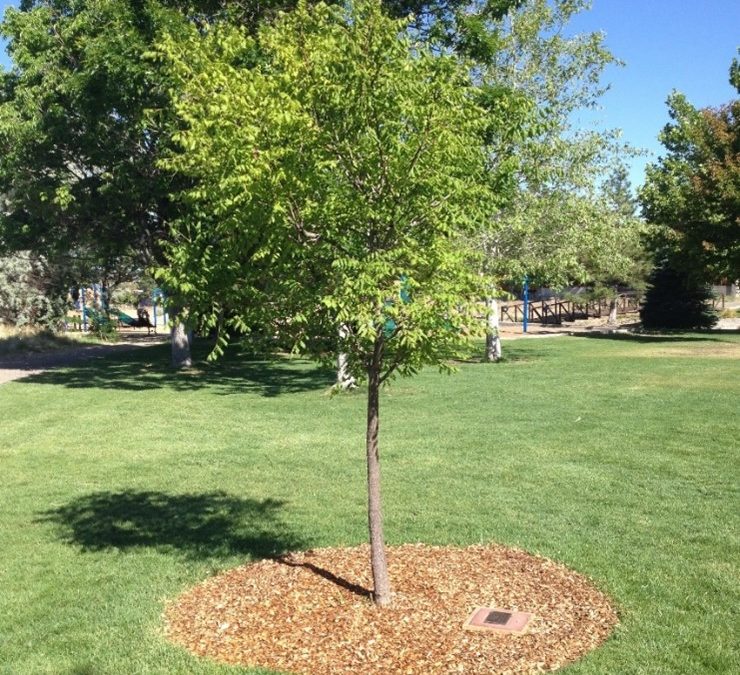As I write this, a cold thin snow cover still hides the ground, but it won’t last long. If we’re lucky, the snow will slowly melt and seep into the soil; if we aren’t lucky, it will sublimate right into the atmosphere – straight from solid to gas. Alas, the roots of our trees lie in the dry desert soil, waiting for water.
It’s always that way, here in the arid Southwest. Our soil, lacking in moisture, also lacks living and dead organic matter. The water that falls on our land either falls infrequently, too little or too much all at once. Still, the plants and trees persist. It is up to us, the human caretakers of these places and trees, to do whatever we reasonably can to provide them with what they need to survive.
Sounds kinda doom-and-gloom, you say? It does! This year promises to be very dry and likely very hot. We all need to do our part to conserve water, and yet we want to keep those established trees healthy and help recently planted trees get established. So, what to do?
It turns out that the two best things we can do are relatively simple. We can reasonably and regularly irrigate the trees (more details below) and apply a layer of coarse organic material as a mulch over the root zone of our trees.
Since every tree in every yard is different, how often you’ll need to water your trees largely depends on how quickly water moves through the soil. In sandy and gravelly areas (Westside and Foothills), the water passes through the soil quickly, moving past the tree roots. These types of soil need watering more often but with less water each time.
Here is how to do it: Water long enough that after a day, when the water has soaked in, the soil has been moistened about 16-24 inches deep. Poke a thin piece of metal (a long screwdriver or something similar will work) into the ground and see how deep you can push it in. That will tell you approximately how deep the water penetrated the soil.
Do this in a broad area, focusing not on the trunk but on the part of the ground under the outer half of the canopy and maybe a bit beyond the drip line (edge of the canopy). Feel the soil with your fingers to determine when to water again. You don’t want to let the soil completely dry out between irrigations! Also, pay attention to the leaves, noticing if they are full and flush or droopy and tired.
The best way to water soil that has more clay in it is to irrigate less often but with more water. This kind of soil holds more water, but that water moves slowly. Be careful not to overwater, especially near the trunk. Too much water in the soil interferes with root function and can more easily lead to root rot and decay issues. Concentrate the water in the outer half, and also in a bit of the canopy shadow, all the way around the tree.
Wood chips, which can be obtained from a tree service or a local vendor, are the ideal mulch for trees. No matter what soil type and irrigation pattern you have, putting approximately three inches of wood chip mulch directly on the soil does wonders for your trees. As with any mulch, wood chips cover and cool the soil and reduce evaporation. As the chips decay, they foster the development of a forest-like soil ecosystem, which is just what tree roots really benefit from. Think of the ground surface in a forest — bits and pieces of old trees, slowly decaying at the surface. Add a new layer of mulch every couple of years, and watch your trees thrive!
Other mulches, like pine bark chips or pecan shells, are not quite as good as wood chips. Rock mulch is not a good choice. It absorbs sunlight and releases that energy as heat that rises through the tree’s canopy and strips even more precious moisture from stressed leaves.
Did you know that the Water Utility Authority will help cover the cost of some of this work? Through the Treebate program, they will offset a portion of the cost of certain purchases — such as new trees — and activities such as pruning and other maintenance work, soil improvements through compost and mulch and even some irrigation costs. Check out tree recommendations and all the program details here.



